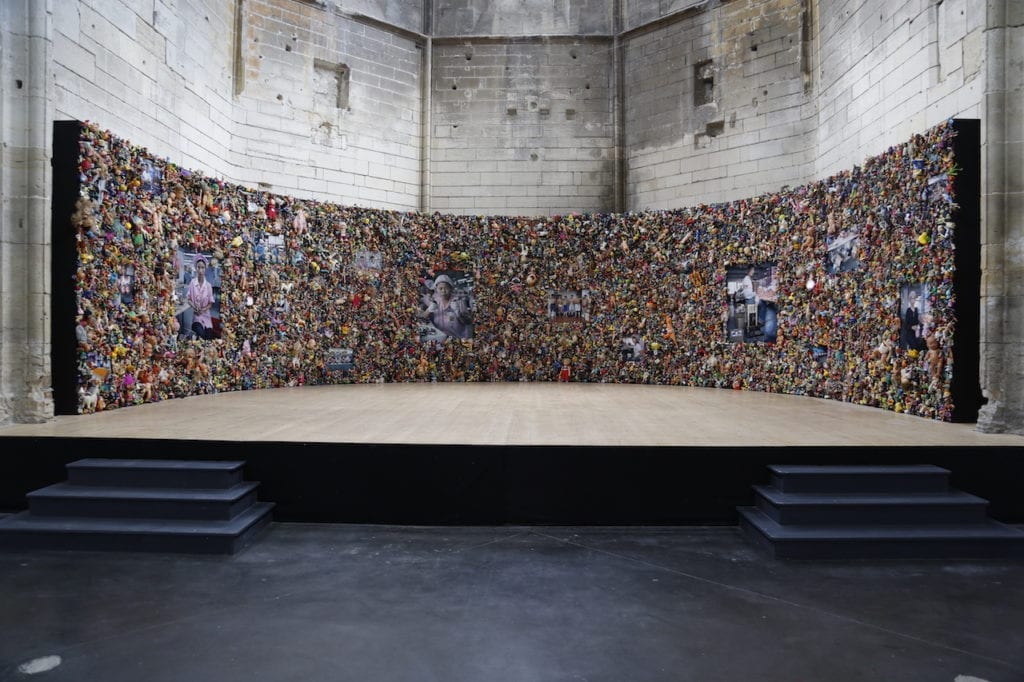
The installation of this show actually took my breath away when I stepped in. The exhibition is another retrospective, bringing together a lifetime of work interrogating aspects of life in modern cities. Presented in the stunning setting of l’église des Frères-Prêcheurs, to me this is the perfect execution of an exhibition. Suspended in the centre of this ancient church are works from Wolf’s series, The Architecture of Density, hanging on chains and positioned at the perfect height to get up close to peer in. These are flattened two dimensional images of Hong Kong high-rise flats that show no skyline and emphasise the repetitive, homogenous exteriors.
There are barely any signs of life in these images, which are then brilliantly juxtaposed adjacent to another series, Transparent City, where Wolf has zoomed in to voyeuristically snatch glimpses of daily life inside office and residential blocks. I particularly liked the references to Wolf’s sense of humour in the show, which are most obviously demonstrated in his collection of “Bastard Chairs” – chairs that he has found on the streets of Tokyo, fashioned out of all sorts of random bits and pieces of broken furniture or household waste.
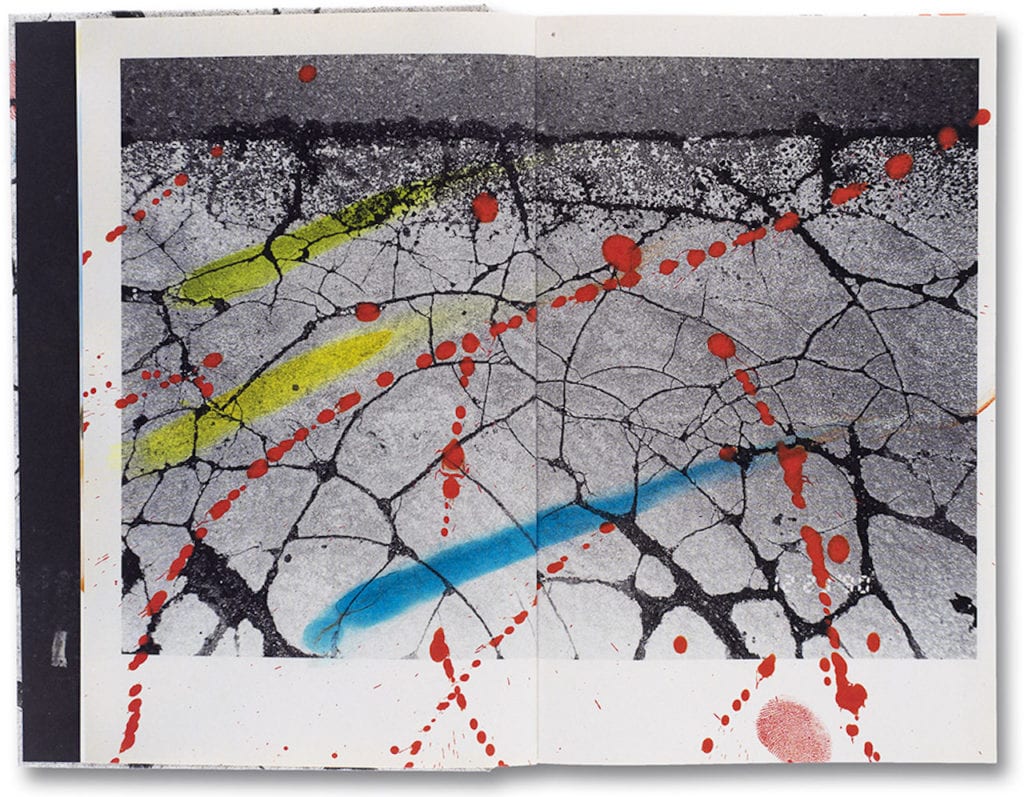
The Incurable Egotist, Masahisa Fukase
This is an exciting and historic exhibition as it is the first retrospective of Masahisa Fukase’s work in Europe. Many of the images are on show outside Japan for the first time. I have been lusting after Hibi, MACK’s recent photo-book of hand-painted images by Fukase, so it was wonderful to get to see them in the flesh.
Hibi is a series of images of the pavements of Tokyo – a close-up study of cracks in the concrete, puddles, faded road-markings, cigarette buts and rubbish. They often include a trace of the artist in the shape of his own feet. Fukase hand-painted the original silver gelatin prints with bright coloured inks – pinks, yellows, oranges and turquoises have dripped and run over the prints creating new layers and patterns. Who knew pavements could be so beautiful? The traces of the artist are again present in the coloured smears and thumbprints on the edges of many of the prints.
Something I had not seen in a long time was the digital dating directly printed into the photograph – giving us exact information about the timing of their creation. This dating is especially poignant as Hibi was one of Fukase’s last bodies of work. Shortly after these works were exhibited for the first time in Japan in 1992 the artist fell down a flight of stairs in a bar, and afterwards he remained in a coma until his death twenty years later.
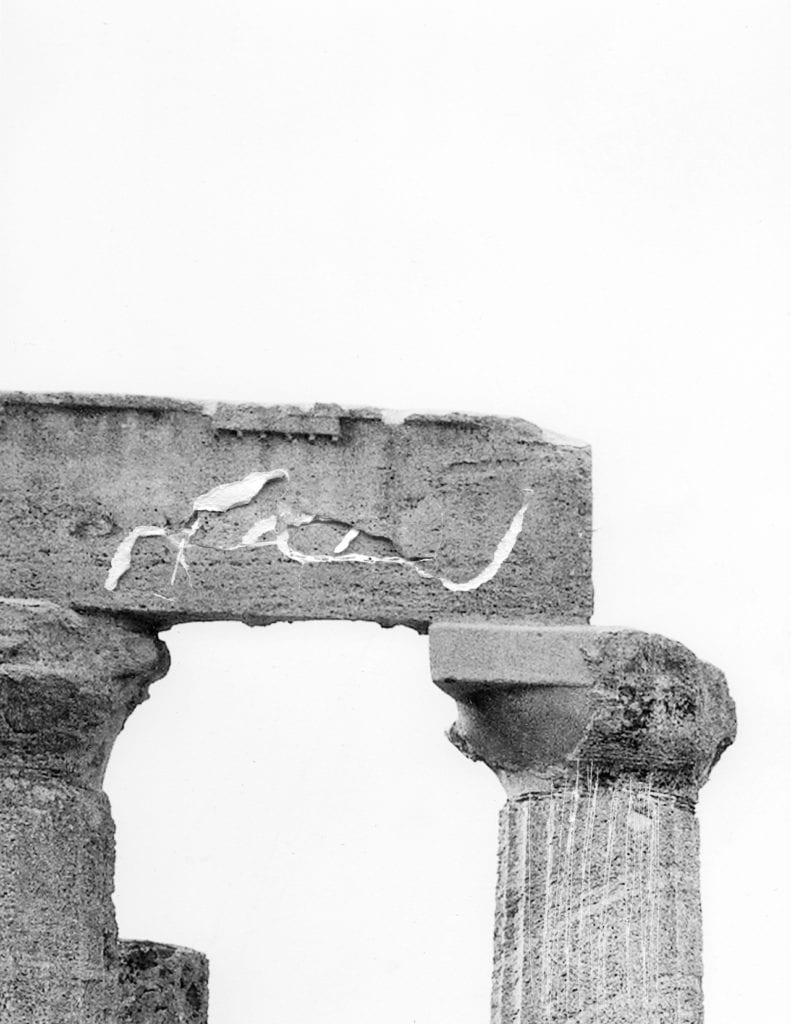
Always The Sun, Dune Varela
I would have been very disappointed if I had left the opening week of Arles without discovering talent that was new to me. Dune Varela was the winner of the BMW residency at the Musee Nicephore Niepce, and the exhibition at Arles is the culmination of that prize. I found myself looking at black-and-white landscape images that appeared to have been shot and riddled with bullet holes. I watched the video about Varela’s residency, which confirmed that I was right – she had fired a gun at her own photographs.
I am particularly drawn to contemporary photographers who have a sensitivity to the history of photography, but who don’t just repeat the past. Varela’s photographs mimic the early landscape photographs of sites of historic interest, many of which are held in the archive at the Musee Nicephore Niepce. Despite the violence inherent in Varela’s intervention onto the photographic surface, I found her method of questioning our consumption of these images gently effective.
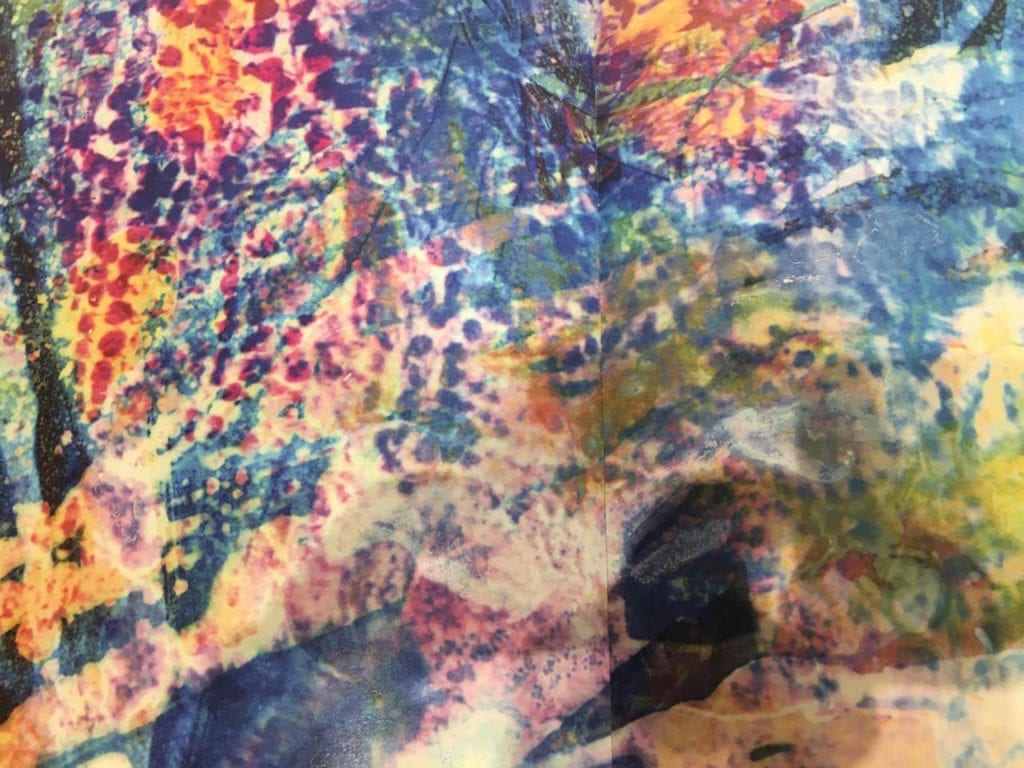
A Rock Is A River, Maya Rochat
Maya Rochat is another contemporary artist who intervenes directly onto the surface of her photographs – in a multitude of different ways. I was delighted to get to see the book dummy for her forthcoming book, A Rock Is A River, shortlisted for the Luma Rencontres Dummy Book Award. The book shares its name with a series of works that Rochat made whilst on a residency in the Swiss mountains in the summer of 2016. “Organic and wild” is how Luma described the work.
The starting point of many of the images is the majestic mountainous terrain that surrounds Rochat in her hometown of Lausanne. Then she adds her personal blend of varying interventions – paint, chemicals, digital layering – twisting and turning the original images into something wilder, energetic and more magnificent. Full disclosure – my gallery represents Rochat, and will next be showing her work at Unseen in September.
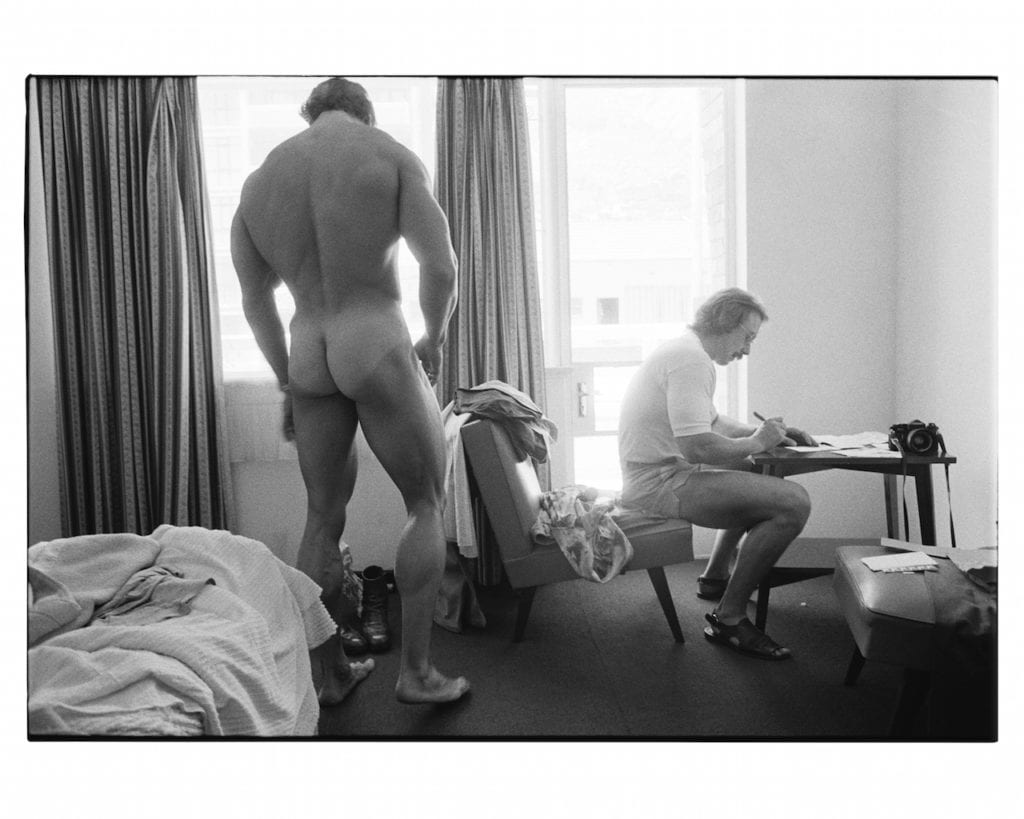
Annie Leibovitz, Archive Project #1, The Early Years, 1970-1983
This exhibition was a very nice surprise as I had never seen images like these from Annie Leibovitz. They include some of the earliest photographs that she took with her first camera in the summer of 1968, and then a full catalogue of images shot for Rolling Stone magazine throughout the 1970s and early 1980s. I loved the slightly chaotic presentation of rows and rows of images loosely tacked onto pinboard-style walls – though everything was becoming a bit of a blur by the time I reached 1983. There are 5000 images in show in total.
What was slightly unsettling were the parallels between then and now in her coverage of the Richard Nixon presidency – the allegations of political bribery, lying political officials and calls for the president to be impeached. I also didn’t know the full story behind Leibovitz’s famous portrait of John Lennon and Yoko Ono – that it was taken on the day of his murder. For that fact alone, I’m very glad I saw this show – organised by the LUMA Foundation’s Living Archive Program and shown at the LUMA Foundation Parc des Ateliers.
